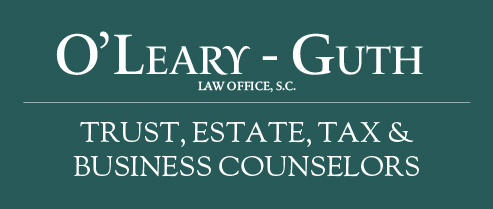SECURE Act 2.0 - What does it mean for you?
Posted: December 30, 2022
By Ken Smith, CPA
President Biden signed the 2023 Fiscal Year Budget on December 29, 2022, which includes the SECURE Act 2.0. The bill is part of the recently passed $1.7 trillion fiscal package and aims to continue updating the laws governing retirement accounts following the changes made by the earlier Secure Act of 2019. Below is a brief overview of some of the key changes:
Required Minimum Distributions (RMD) Age Start Date Increase, Penalty Reductions
Effective January 1, 2023 the initial age in which a traditional retirement account holder must begin their RMDs will increase from 72 to 73. This age will climb to 75 in 2033.
SECURE Act 2.0 also reduces the penalty for failure to take an RMD down to 25% (or 10% if the error is corrected in a timely manner).
IRA Catch-up and 401(k) Contribution Limits Increased
Beginning in 2023, the annual IRA contribution limit is $6,500 for individuals under age 50, or $7,500 for individuals age 50 or older.
Also in 2023, 401(k) contribution limits will be increased from $20,500 to $22,500.
Penalty-Free Withdrawals for Emergencies
Beginning in 2024, individuals may withdraw up to $1,000 from their retirement account for unforeseeable or immediate financial needs relating to necessary personal or family emergency expenses. The withdrawals are limited to once per year and must be paid back within three years.
In addition, individuals may withdraw up to $22,000 from employer retirement accounts or IRAs for emergency needs related to federally declared disaster relief. The emergency must occur after January 26, 2021. Taxpayers affected by hurricanes, floods, tornadoes, wildfires, or other disasters should check whether their area is declared a federal disaster area.
Domestic abuse victims may also be allowed to withdraw certain assets, penalty-free based on their situation.
529 College Savings Plan Rollovers
Beginning in 2024, certain individuals may rollover assets from their 529 College Savings plan to a Roth IRA, tax- and penalty-free, up to $35,000 over their lifetime. However, there is a requirement that the 529 plan be open for at least 15 years before the rollover, and annual IRA contribution limits apply.
Mandatory Automatic Enrollment into Retirement Plans
For new 401(k) and 403(b) plans established after SECURE Act 2.0, employers (with limited exceptions for small businesses and new employers) are required to automatically enroll any eligible employee into their 401(k) or 403(b) retirement plan effective January 1, 2025. Employees continue to retain the ability to opt-out.
Eligibility Requirements Revised
The SECURE Act of 2019 allowed part-time employees to participate in the employer’s retirement plan only if those employees worked at least 1,000 employed hours in a year or if they worked 500 employed hours consecutively for three years. SECURE Act 2.0 now decreases the consecutive year requirement from three years to two years.
Distribution of Former Employee Retirement Accounts
SECURE Act 2.0 allows employees beginning in 2024 to automatically distribute a retirement account balance to a former employee if the balance is less than $7,000 (currently the threshold is $5,000).
Long Term Care Insurance Premiums
Beginning in 2026 the SECURE Act 2.0 allows withdrawals of up to $2,500 per year from retirement accounts to pay long term care insurance premiums. The withdrawals are taxable if drawn from a traditional retirement account but there is no penalty on the withdrawal.
Conclusion
If you would like assistance or wish to further discuss how the SECURE Act 2.0 affects you, please contact us at (262) 238-6996 or firm@olglawoffice.com to schedule a phone conference or meeting.
Schedule an appointment with us today.
Meet with a knowledgeable attorney who specializes in your area of law.
1251 W. Glen Oaks Lane, Mequon, WI 53092
F: (262) 238-6999

